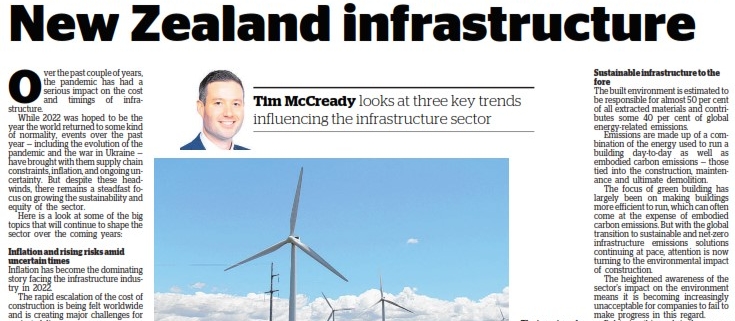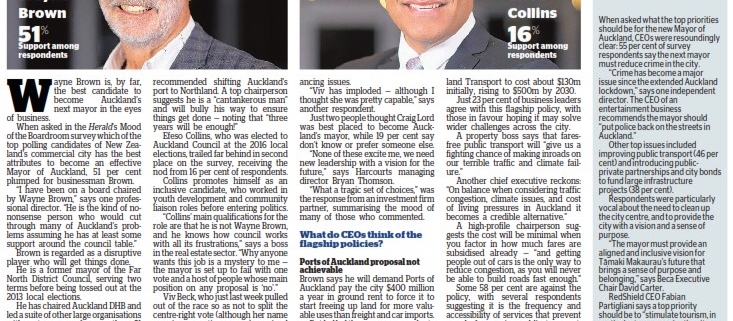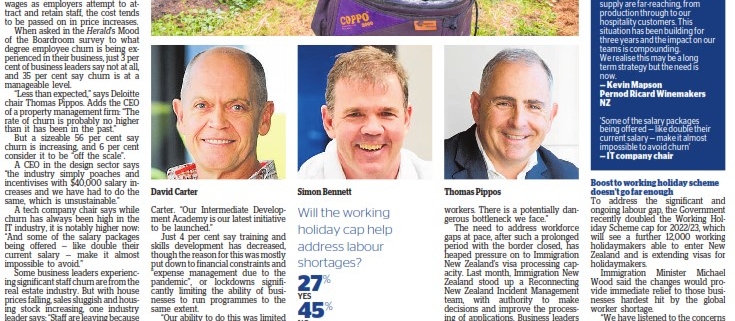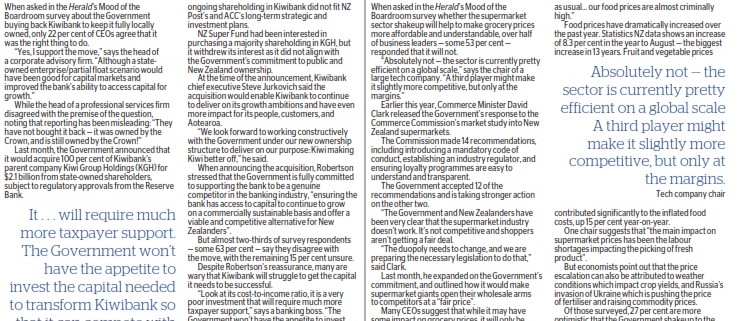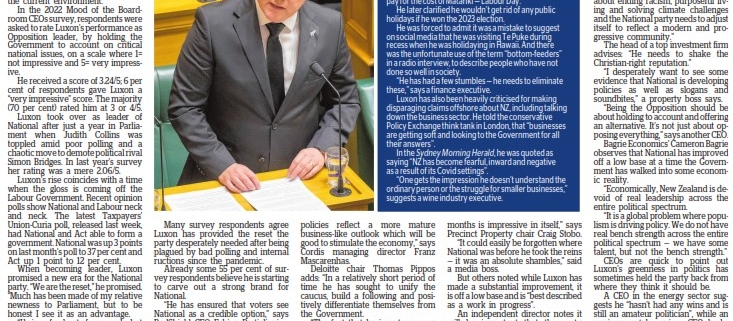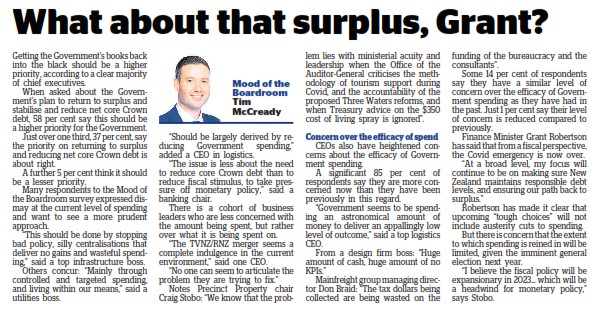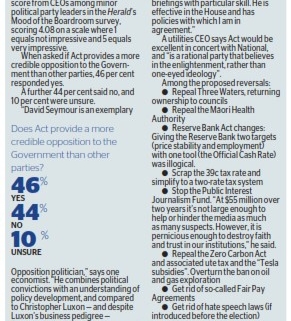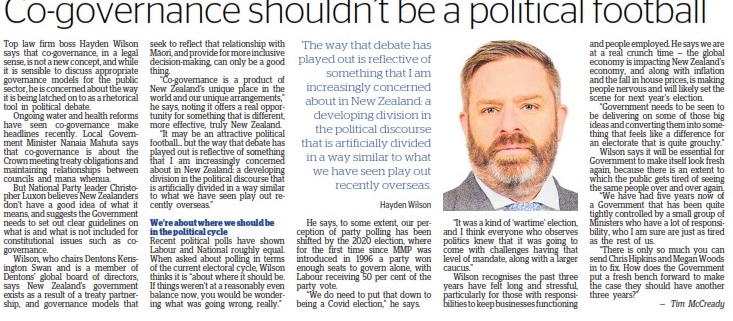Infrastructure: Women are a powerhouse in New Zealand infrastructure (NZ Herald)
Infrastructure: Women are a powerhouse in New Zealand infrastructure (NZ Herald)
Tim McCready looks at three key trends influencing the infrastructure sector
Over the past couple of years, the pandemic has had a serious impact on the cost and timings of infrastructure.
While 2022 was hoped to be the year the world returned to some kind of normality, events over the past year — including the evolution of the pandemic and the war in Ukraine — have brought with them supply chain constraints, inflation, and ongoing uncertainty. But despite these headwinds, there remains a steadfast focus on growing the sustainability and equity of the sector.
Here is a look at some of the big topics that will continue to shape the sector over the coming years:
Inflation and rising risks amid uncertain times
Inflation has become the dominating story facing the infrastructure industry in 2022.
The rapid escalation of the cost of construction is being felt worldwide and is creating major challenges for project delivery.
This is being exacerbated by ongoing supply chain constraints. Initially caused by the pandemic, this has continued as a result of Russia’s invasion of Ukraine and the continued snap lockdowns in China.
In its latest quarterly report, the New Zealand Infrastructure Commission Te Waihanga, cautions that if inflation continues to run hot and supply chains remain constrained, it will be challenging to deliver infrastructure rapidly without stretching our limited capacity to build.
But though inflation statistics suggest demand is still outrunning supply, there are emerging signs of a global economic slowdown.
China’s continued push for zero-Covid and the intermittent lockdowns that come with it, combined with its struggling real estate market, has resulted in a sharp drop in growth and the world’s reliance on China will ensure that slowdown is felt everywhere.
Last month the International Monetary Fund (IMF) cut its global growth forecast for 2023 to 2.7 per cent from a previous forecast of 2.9 per cent. In a recent update, the IMF said recent high-frequency indicators “confirm that the outlook is gloomier” than projected, particularly in Europe.
Reduced economic activity will see inflation lessen, but will likely bring with it an increase in unemployment and insolvency risk for construction firms.
As rising interest rates reduce the ability to borrow and see demand for residential building fall away, it will place the broader construction sector under pressure and shift the focus from managing cost increases and capacity pressures to managing workload and maintaining financial sustainability.
As Te Waihanga notes, if the global economy tips over into recession, falling demand from non-infrastructure construction may ease the capacity and skills pressures seen over the last year, and bring with it an opportunity to deliver more infrastructure.
Advancing women in infrastructure
Like all industries, increasing diversity and inclusiveness will be a necessity to address challenges the infrastructure sector is facing.
There has been good progress on this front over the past year. A growing number of businesses in the sector have established diversity targets.
This year Fletcher Building reported its intern cohort had a 50:50 split between men and women, and its graduate cohort was 40 per cent women.
Tonkin and Taylor has found purposefully and openly talking about unconscious bias at all levels of the organisation has been a great tool to create an environment that has zero tolerance for discrimination.
Chief executive Penny Kneebone, says momentum regarding diversity and inclusivity has picked up across the sector in the past year, noticeably via the diversity of voices in the sector sharing their thoughts, perspectives and experience.
“That is great, but it is important to keep up the good mahi and build on that momentum,” Kneebone says. She’d like to see stronger progress made regarding diversity and inclusion metrics across the sector.
“We can talk the talk, but diversity and inclusion metrics will help give the industry insights and indicators on where to take action to improve and ensure that we’re walking the walk.”
Infrastructure New Zealand, the industry’s member association, has several initiatives to help its members create and sustain a diverse and inclusive infrastructure sector.
The group is chaired by Margaret Devlin, elected to the position at the 2021 AGM, who has a particular focus on people, diversity and culture.
She is also chair of Auckland’s Watercare and Lyttelton Port and a director of DairyNZ, Hamilton Airport, IT Partners Group and Waimea Water.
Earlier this year, Infrastructure NZ established a diversity advisory board to help address key challenges facing the sector.
The Women’s Infrastructure Network, set up in 2016 to increase the number of women in leadership roles and grow the visibility of women, now has seven chapters throughout the country and a combined membership of more than 2100 women.
To further attract women to the sector, managing director of international engineering consultancy Aurecon, Tracey Ryan, says there is no single approach that will work.
“It must be a combination of leadership, policies/systems and behaviours, she says.
“We also need to get in front of school children to help break down barriers and normalise that anyone can have a career in the infrastructure industry.
“There are now more senior female leaders in the industry which has been great progress — we are still a small group, but we’re not just a couple anymore.
“It’s about ‘you can’t be what you can’t see’, so the more we support women into senior and leadership roles the better.”
Ryan is herself also co-chair of the Construction Sector Accord.
Sustainable infrastructure to the fore
The built environment is estimated to be responsible for almost 50 per cent of all extracted materials and contributes some 40 per cent of global energy-related emissions.
Emissions are made up of a combination of the energy used to run a building day-to-day as well as embodied carbon emissions — those tied into the construction, maintenance and ultimate demolition.
The focus of green building has largely been on making buildings more efficient to run, which can often come at the expense of embodied carbon emissions. But with the global transition to sustainable and net-zero infrastructure emissions solutions continuing at pace, attention is now turning to the environmental impact of construction.
The heightened awareness of the sector’s impact on the environment means it is becoming increasingly unacceptable for companies to fail to make progress in this regard.
Bolstering this push is the energy crisis in Europe. The invasion of Ukraine has spurred an effort from European countries to reduce the use of oil and gas in the region and improve the energy efficiency of infrastructure.
Last month, the International Energy Agency (IEA) released its annual World Energy Outlook report and noted that the invasion is likely to accelerate the world’s transition to greener energy from fossil fuels.
“Energy markets and policies have changed as a result of Russia’s invasion of Ukraine, not just for the time being, but for decades to come,” said IEA executive director Fatih Birol.
“Governments around the world are responding to the crisis by doubling down on clean energy — in the US, EU, Japan, China, India and elsewhere. Their new policies are set to help global clean energy investment rise above US$2 trillion a year by 2030, an increase of over 50 per cent from today.”
Infrastructure is not only highly responsible for climate change and integral to its mitigation, but it is also highly exposed to its effects.
If the coalition of nations is to meet the Paris Agreement to decarbonise the global economy by 2050, current momentum seen in green infrastructure looks set to continue.
In a world where the geopolitical and economic environment look shaky, clean infrastructure will help to boost growth, create jobs and build energy security and resilience against the ongoing effects of climate change.

